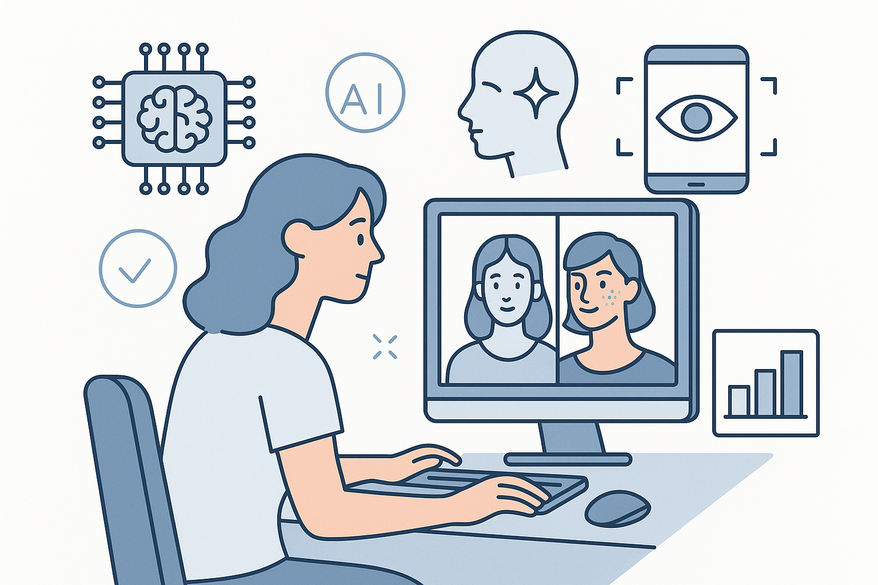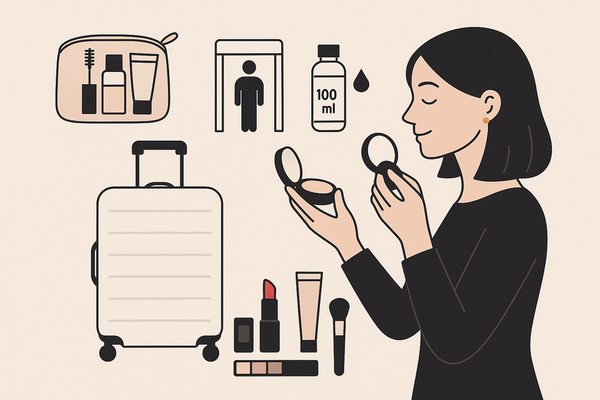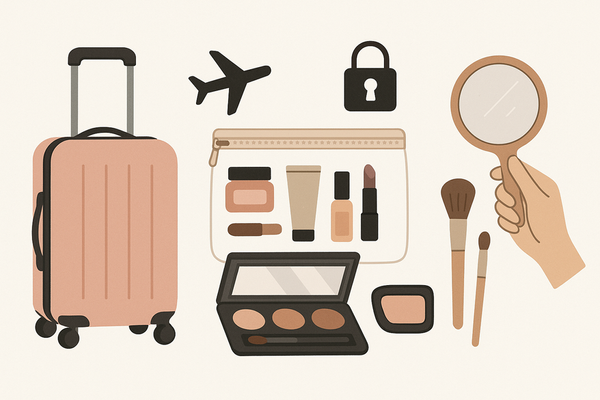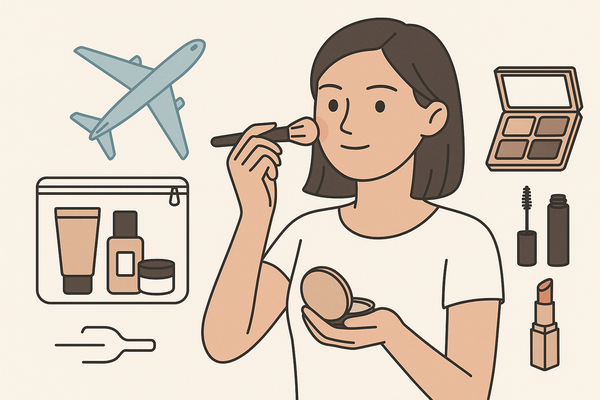Detailed Makeover Case Studies with AI: Inspiring Transformations in Beauty & Branding
Explore detailed makeover case studies with AI to see how generative AI, AR, and computer vision deliver personalized, measurable transformations.

Estimated reading time: 12 minutes
Key Takeaways
- Personalized transformations: AI blends computer vision, generative models, and AR to deliver unique makeovers at scale.
- Realistic previews: Virtual try-ons and dynamic lighting boost customer confidence and engagement.
- Measurable results: Case studies from Perfect Corp, Sephora, Tarte, and small businesses show significant ROI improvements.
- Best practices: Inclusive data, continuous feedback loops, and combining AR with generative AI drive success.
- Future innovations: Voice assistants, live tutorials, and cross-domain applications will shape the next wave of AI makeovers.
Table of Contents
- Background on AI in Makeovers
- Detailed Makeover Case Studies with AI
- Case Study 1: Perfect Corp’s Virtual Try-On Tools
- Case Study 2: Sephora Virtual Artist Platform
- Case Study 3: Tarte Cosmetics’ Foundation Shade Finder
- Case Study 4: Small Business Brand Makeover
- Analysis & Insights on Detailed Makeover Case Studies with AI
- Future Directions
- Conclusion
- Additional Resources
- FAQ
Background on AI in Makeovers
AI in makeovers harnesses computer vision, generative AI, and augmented reality to create engaging virtual transformation experiences.
Key Technologies
- Computer Vision: Algorithms interpret visual data—detect facial landmarks, skin texture, and color to inform simulations. (Source)
- Generative AI: Neural networks learn from large datasets to craft custom makeup looks and style concepts. (Source)
- Augmented Reality (AR): Overlays digital elements on live camera feeds, enabling real-time try-ons. (Source)
Evolution in Creative Industries
- Early days: Basic image editing and color correction powered by AI.
- Today: AR-driven virtual try-ons, dynamic recommendations, voice-assisted beauty guides. (Source)
Benefits of AI Makeovers
- Exclusive personalization across diverse skin tones and features. (Source)
- Improved accessibility with voice guidance for visually impaired users.
- Higher customer confidence via realistic previews. (Source)
- Operational gains: fewer returns, increased conversions, longer session times. (Source)
Detailed Makeover Case Studies with AI
Below are four inspirational examples showcasing varied approaches, technologies, and outcomes.
Case Study 1: Perfect Corp’s Virtual Try-On Tools
- Overview: Partnered with over 500 beauty and fashion brands.
- Objectives: Enable digital experimentation and personalized, AI-driven advice.
- Process:
- Deep-learning models trained on 90,000+ skin tones for inclusive color rendering.
- AR overlays simulate real-time makeup, hair color, and style changes on live video.
- Continuous refinement via user interactions and feedback loops. (Source)
- Outcomes:
- 320% increase in conversion rates.
- 33% rise in average order value.
- Notable uplift in customer engagement across partners. (Source)
Case Study 2: Sephora Virtual Artist Platform
- Overview: AI-powered suite integrated into web and mobile apps.
- Objectives: Boost inclusivity, drive engagement, reduce uncertainty.
- Process:
- Facial geometry analysis identifies contours, skin tone, and proportions.
- Dynamic lighting ensures realistic color rendering under varied conditions.
- Real-time feedback loops refine full-look recommendations. (Source)
- Outcomes:
- 3× higher purchase likelihood for engaged users.
- 30% reduction in returns from improved shade accuracy.
- 4× longer in-app sessions, signaling deeper engagement. (Source)
Case Study 3: Tarte Cosmetics’ Foundation Shade Finder
- Overview: AR-driven shade matching in online store and mobile app.
- Objectives: Increase confidence in foundation selection and reduce returns.
- Process:
- Interactive try-on captures real-time video and applies digital foundation samples.
- Algorithmic shade matching under diverse lighting suggests best-fit hues.
- Model improvements from aggregated customer feedback. (Source)
- Outcomes:
- 2× increase in conversion rates for foundation products.
- Significant growth in time spent on product pages.
- Global engagement across diverse markets. (Source)
Case Study 4: Small Business Brand Makeover
- Overview: Content creator transformed personal brand using AI automation.
- Objectives: Scale workflows, amplify creativity and reach.
- Process:
- Generative AI for logo concepts and brand assets.
- Automated copy generation for social posts and email campaigns.
- Scheduling and A/B testing via AI-driven platforms. (Source)
- Outcomes:
- Manual workload reduced—assets produced in minutes.
- 50% growth in social media reach and engagement.
- Consistent brand identity through template-based automation.
Analysis & Insights on Detailed Makeover Case Studies with AI
Comparing methodologies, personalization focus, and outcomes reveals best practices and actionable tips.
Comparison of Methodologies and Impact
- AI Technology:
- Perfect Corp: Deep learning + AR overlays.
- Sephora: Facial geometry + dynamic lighting.
- Tarte: AR-based shade matching.
- Small Business: Generative AI + content automation.
- Personalization Focus:
- Skin tone diversity.
- Full-look recommendations.
- Precise shade matching.
- Cohesive brand identity.
- Measurable Outcomes:
- +320% conversions, +33% AOV (Perfect Corp).
- 3× purchases, –30% returns, 4× session time (Sephora).
- 2× conversions, triple-digit time growth (Tarte).
- 50% social reach growth, time savings (Small Business).
Common Patterns
- Inclusive training data for personalization at scale.
- Seamless e-commerce and mobile integration.
- Data-driven feedback loops for continuous refinement.
Unique Strategies
- Voice-enabled beauty assistants for hands-free experiences.
- Full-look routines beyond single products.
- Global consistency in AR color rendering.
- Automated content pipelines for scalable branding.
Actionable Tips for Your AI Makeovers
- Train models on inclusive datasets—cover multiple skin tones, ages, and features. Explore personalized makeup tips with AI.
- Embed real-time feedback loops to refine recommendations post-launch.
- Combine AR overlays with generative AI for hyper-realistic previews.
- Track both creative engagement (session time, shares) and operational metrics (conversion, returns).
Future Directions
Emerging trends point to richer, more accessible AI makeover experiences:
- Generative AI for hyper-personalized style suggestions.
- Real-time AR overlays for live tutorials and virtual events.
- Voice-enabled assistants for accessible, hands-free guidance.
- Expansion into interior design, fashion styling, and experiential marketing.
Creative Prompts to Spark Ideas
- How could generative AI craft a fully personalized brand identity from logo to templates?
- What AR-driven experiences can immerse audiences in interactive product launches?
- How might voice-enabled AI democratize styling advice for visually impaired users?
Conclusion
These case studies demonstrate how computer vision, generative AI, and AR deliver personalized makeovers, elevate engagement, and drive ROI. From global brands to individual creators, AI unlocks transformative potential across industries.
Ready to begin your AI makeover journey? Learn more in AI Makeup Coach: Your Guide to the Future of Beauty-Tech & Innovation.
Additional Resources
Deepen your knowledge with these curated materials:
- Generative AI in the Beauty Industry
- 5 Ways Sephora Is Using AI
- AI-Based Virtual Makeover App Development
- Case Study: Tarte Cosmetics
- AI Makeover Podcast: The AI Hat
FAQ
- What is an AI-driven makeover? An AI-driven makeover uses computer vision, AR, and generative models to provide personalized beauty, styling, or branding recommendations in real time.
- How do virtual try-ons improve customer experience? By offering realistic previews, virtual try-ons boost confidence, reduce purchase uncertainty, and lower return rates.
- Which metrics matter for AI makeover success? Key metrics include conversion rate uplift, average order value, session duration, and return reduction.
- How can small businesses leverage AI for branding? Small teams can use generative AI for logos, automated copy generation, and data-driven scheduling to scale workflows efficiently.
- What’s next for AI makeovers? Future developments include voice-enabled assistants, live interactive tutorials, and expansion into new creative domains beyond beauty.




